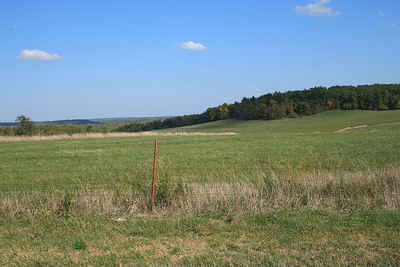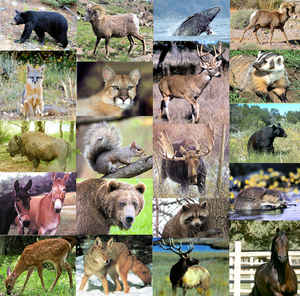
Missouri Symbols
Missouri State Animal
Missouri Mule

(Equus spp.)
Adopted on May 31, 1995
The Missouri Mule was chosen as the official animal of the State of Missouri by the 88th General Assembly in 1995. Known for its strength, hardiness, intelligence, even temper - and healthy stubbornness - the mule has come to symbolize Missouri.
Missouri State Animal: Missouri Mule
History of the Missouri State Animal

The Missouri Mule is a hybrid, the offspring of a mare (female horse) and a jack (male donkey). After its introduction to the state in the 1820s, the mule quickly became popular with farmers and settlers because of its hardy nature. The pride of Missouri breeders, mules have built railroads, logged forests, plowed fields, mined coal and helped win wars. The US exported about 232,000 mules during World War I, many coming from Missouri. Although still an excellent work animal, the majority of Missouri's mules today are bred for show. Exhibited at the State Fair in Sedalia and at many county fairs, they range from massive draft mules weighing up to 1,200 pounds to beautifully proportioned miniature mules. What ever their size, they're Missouri mules . . . and that means they're the best.
On May 31, 1995, Governor Mel Carnahan signed a bill designating the Missouri mule as the official state animal. The mule is a hybrid, the offspring of a mare (female horse) and a jack (male donkey). After its introduction to the state in the 1820s, the mule quickly became popular with farmers and settlers because of its hardy nature. Missouri mules pulled pioneer wagons to the Wild West during the 19th century and played a crucial role in moving troops and supplies in World Wars I and II. For decades, the Show Me State was the nation's premier mule producer. (RSMo 10.110)
Characteristics of the Missouri State Animal

With its short thick head, long ears, thin limbs, small narrow hooves, short mane, absence of chestnuts (horny growths) inside the hocks, the mule looks like a donkey; in height and body, shape of neck and croup, uniformity of coat, and teeth, it appears horse-like; the mule comes in all sizes, shapes and conformities. There are mules that resemble quarter horses, huge draft mules, fine-boned racing mules, shaggy pony mules and many more types.
A mule does not sound exactly like a donkey or a horse. Instead, a mule makes a sound that is similar to a donkey's but also has the whinnying characteristics of a horse (often starts with a whinny, ends in a hee-haw). Sometimes, mules whimper. The coats of mules come in the same varieties as those of horses. Common colors are Sorrel, Bay, Black, and Grey. Less common are White, Roans (both blue and red), Palomino, Dun, and Buckskin. Least common are Paint mules or Tobianos.
The mule possesses the sobriety, patience, endurance and sure-footedness of the donkey, and the vigour, strength and courage of the horse. Operators of working animals generally find mules preferable to horses: mules show less impatience under the pressure of heavy weights, and their skin, harder and less sensitive than that of horses, rendering them more capable of resisting sun and rain. Their hooves are harder than horses', and they show a natural resistance to disease and insects. Many North American farmers with clay soil found mules superior as plow animals, especially in the U.S. state of Missouri, hence the expression "stubborn as a Missouri mule".
Mules are generally less tolerant towards dogs than horses are. They are also capable of striking out with any of their hooves in any direction, even sideways if needed.
Mules exhibit a higher cognitive intelligence than their parent species - horses and donkeys. This is believed to be the result of hybrid vigour, similar to how mules acquire greater height and endurance than either parents.
Missouri Law
The law designating the Missouri Mule as the official Missouri state animal is found in the Missouri Revised Statutes, Title 2, Chapter 10, Section 10.110.
TITLE II
SOVEREIGNTY, JURISDICTION AND EMBLEMS
August 28, 2008
Official animal.
10.110. The Missouri Mule, known for its strength, hardiness, intelligence and even temper, is selected for and shall be known as the official animal
of the state of Missouri.
(L. 1995 H.B. 84 & 98)
Taxonomic Hierarchy: Missouri Mule
Kingdom: Animalia
Phylum: Chordata
Class: Mammalia
Order: Perissodactyla
Family: Equidae
Genus: Equus
Species: Equus asinus x Equus caballus







